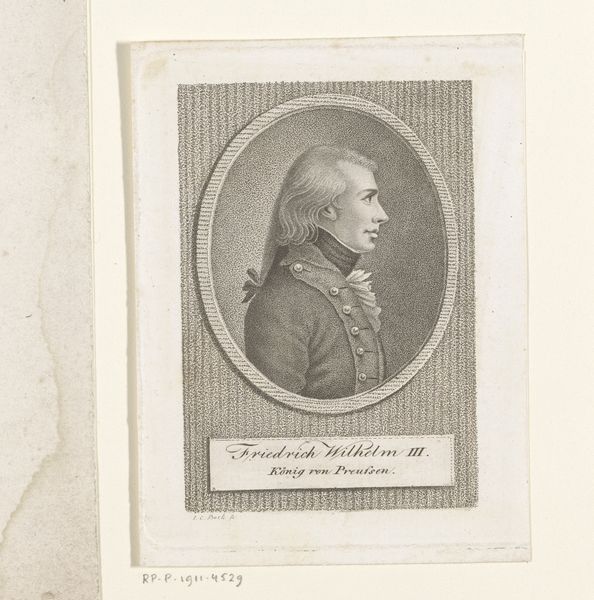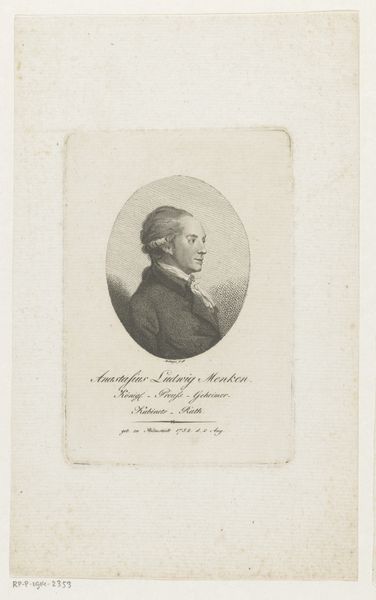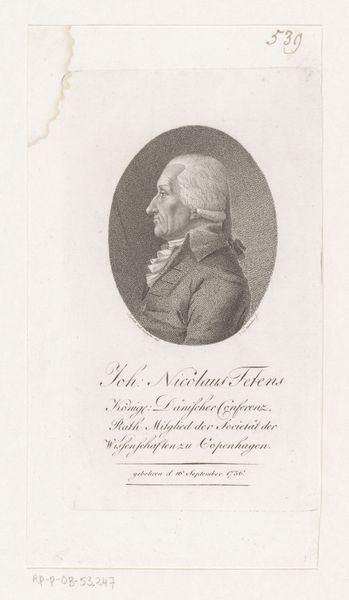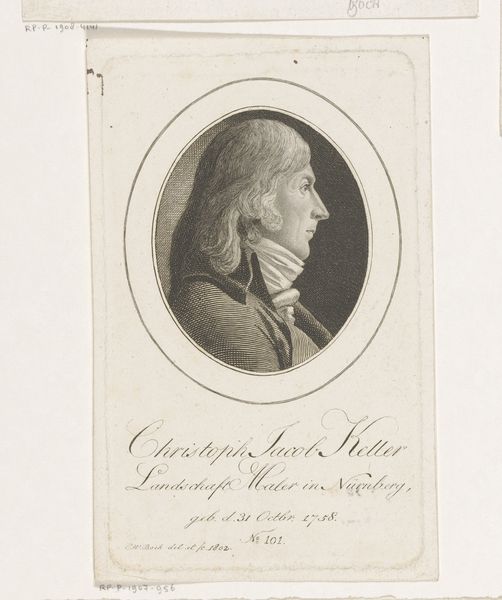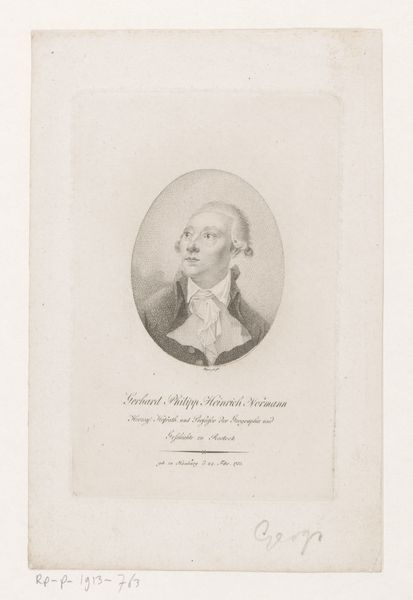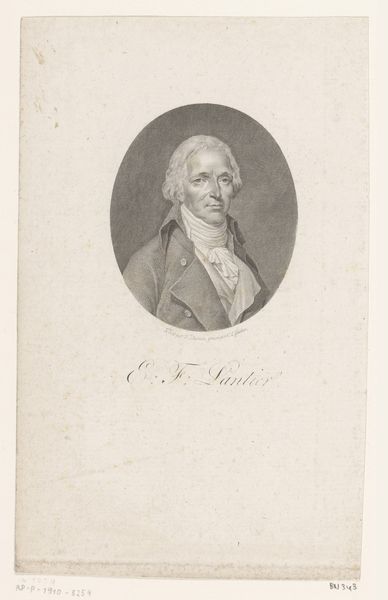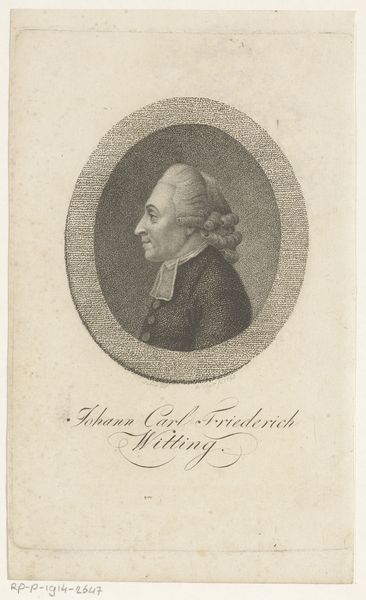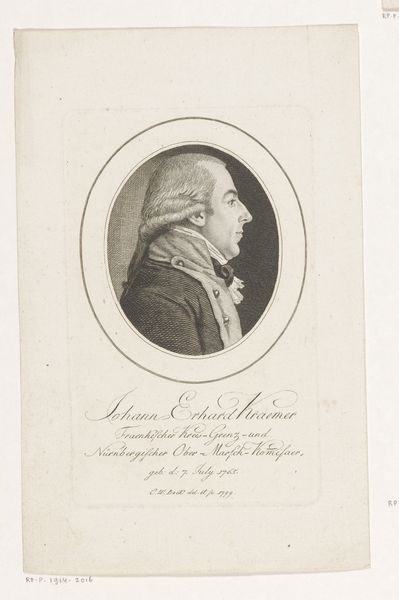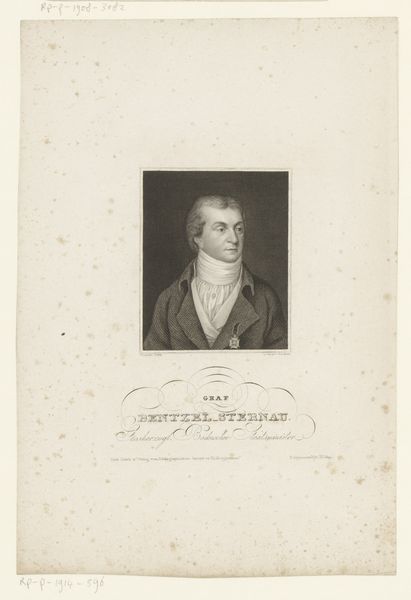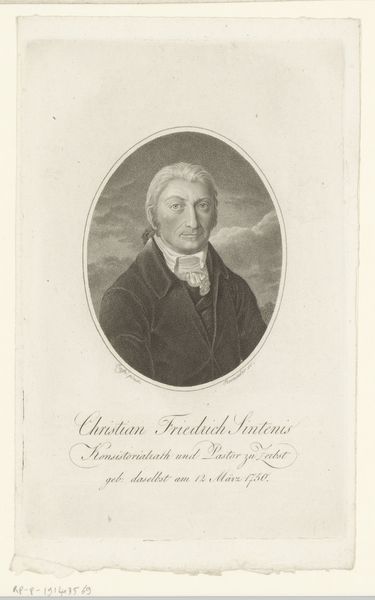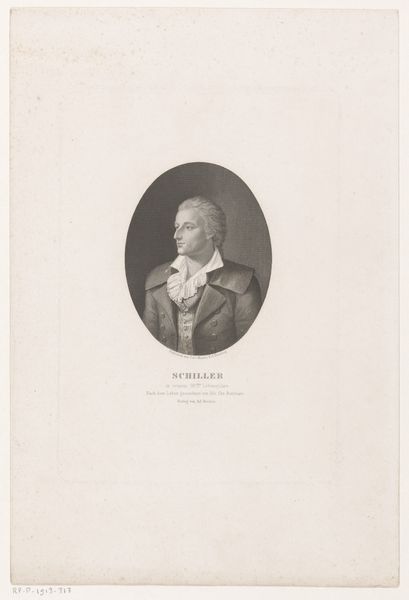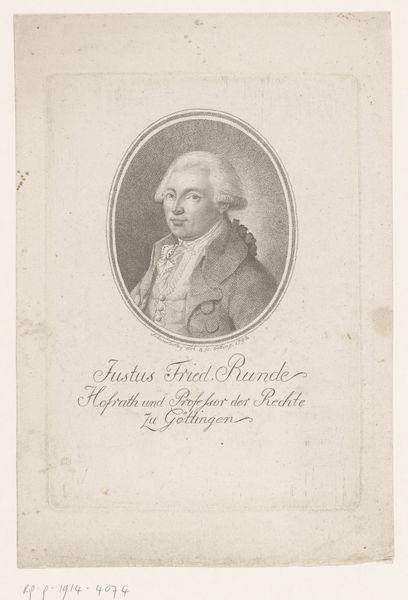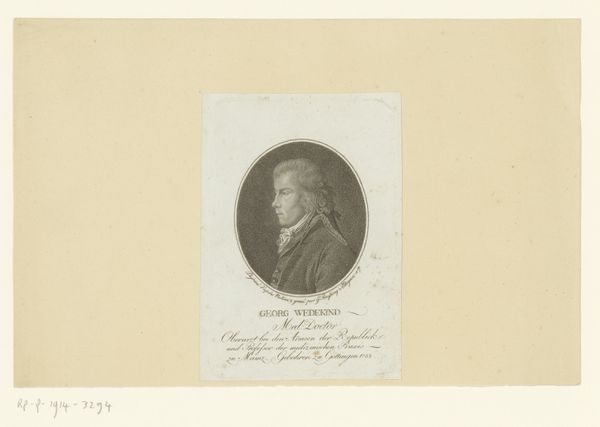
print, engraving
#
pencil drawn
#
neoclacissism
# print
#
history-painting
#
engraving
Dimensions: height 120 mm, width 98 mm
Copyright: Rijks Museum: Open Domain
Editor: Here we have a print from 1797, a portrait of Friedrich Wilhelm III of Prussia by Heinrich Sintzenich. It's quite formal, rendered in engraving, and evokes a sense of austere nobility. What can you tell us about the context of its creation? Curator: This print offers an interesting perspective into the visual construction of power during the late 18th century. Engravings like this, reproduced and disseminated widely, were a primary means of image circulation. Consider the deliberate choice of neoclassicism. It connects Friedrich Wilhelm III to the perceived virtues of antiquity, projecting stability and reasoned governance. Editor: So the artist is drawing on established visual traditions to present the king in a certain way? Curator: Exactly. The circulation of these images functioned almost as propaganda. Think about where such an image might be displayed – in government offices, public spaces, or even private homes of loyal subjects. It’s about reinforcing his authority and connecting it to ideals familiar to the elite, creating and reinforcing his political persona. Editor: The choice of medium then, engraving, becomes significant in understanding its influence. Would a painting of the same image have been as effective? Curator: No. The *print*, in its reproducibility, democratizes access to the ruler's image, although limited within societal structures. What's striking is how effectively Sintzenich uses a relatively 'democratic' medium to bolster an autocratic regime. It’s also critical to remember the limitations inherent in engraved likenesses. These aren’t snapshots, but idealized projections carefully managed. Editor: So, rather than a straightforward depiction of a ruler, it's actively constructing a specific image, using readily available tools to consolidate power. I never considered the political implications of a simple engraving so deeply! Curator: Precisely! Recognizing these underlying currents enriches our understanding of art as a powerful tool shaping not just aesthetics, but public perception and political legitimacy.
Comments
No comments
Be the first to comment and join the conversation on the ultimate creative platform.
